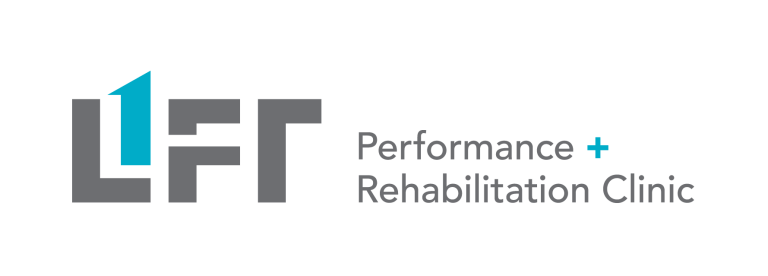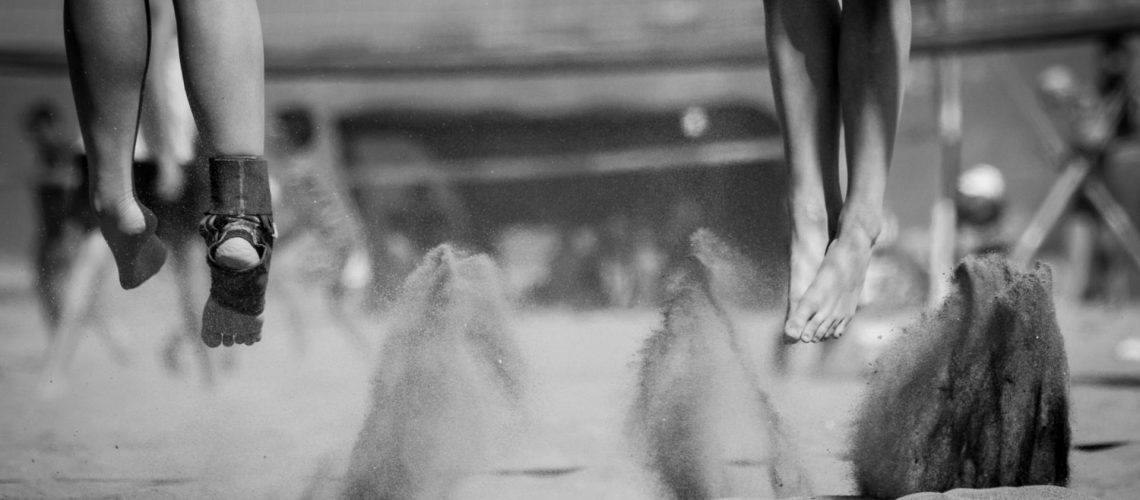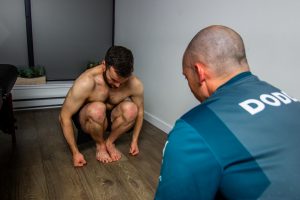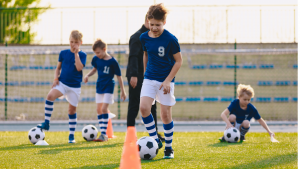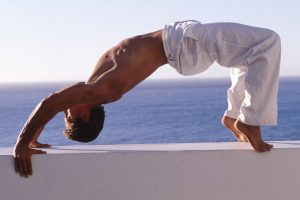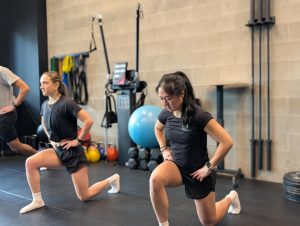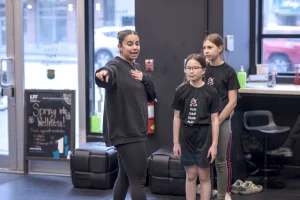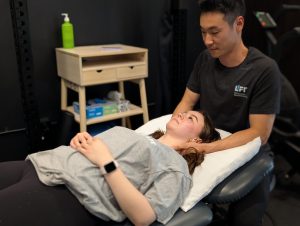Beat Foot and Ankle Pain and Improve Performance With Lift Clinic's Vancouver Physiotherapy, Chiropractic, and RMT Massage Therapy Team.
Ok, let’s talk foot and ankle pain! What an important but perhaps not eye-catching part of the body for performance, function and longevity. The foot and ankle are critical for standing, balance (and preventing falls), walking, running and playing most sports. Here at Lift Clinic our clinicians specialize in helping people understand and optimize movement from head to toe – so let’s spend some time talking about these amazing but perhaps under-appreciated areas!,
Whether you're here for performance...
...or for rehabilitation, we're ready to help.
Take a sneak peek into how we work with foot and ankle pains at Lift Clinic.
Physiotherapist Travis Dodds shares how clinicians at Lift Clinic can treat your foot and ankle to eliminate pain and optimize performance.
What's it like to rehabilitate your foot and ankle pain with Lift Clinic?
At Lift Clinic we strive to provide you with a thorough assessment that incorporates an understanding of your head to toe movement abilities and how these relate to your pain and injury. We believe in helping clients level up movement by addressing root causes of pain. As a team we train together to help ensure our clinicians know the abilities of their teammates. This is so we can make accurate “passes” when sharing clients, like how elite sports team make passes as they work towards scoring a goal.
Foot & Ankle Rehabilitation
When it comes to the foot, you can expect we’ll ask lots of questions like when did you first notice pain, how did it happen, what makes it worse, what makes it better? We’ll do an assessment of the foot/ankle joints, muscles, bones, ligaments, movements and abilities such as standing, walking, squatting, jumping, balancing. We’ll also do a head-to-toe movement assessment so we can better understand how the foot relates to movement throughout your body, and whether the foot is causing problems for whole-body movements or vice-versa.
We encourage clients to think big picture and help us understand who you are and what’s most important to you. So we like to start by asking questions like this:
What would you be doing right now if your health and function were 100%?
This is perhaps the most important part of your assessment and treatment process.
What would you be doing? Sometimes we find clients have been limited by their physical function for so long, they have no idea what they’re capable of. What’s worse, sometimes people have begun to let go of their dreams.
Injuries are extremely common at the foot and ankle. Because foot and ankle injuries are so common, as a result we find that people often don’t treat them as though they’re very important.
A recent study published in the American Journal of Sports Medicine found some startling numbers. Looking across all the sports in the NCAA collegiate sports system, the authors found that foot and ankle injuries accounted for 27% of ALL reported injuries! And that of those injuries, 21% of people had to miss at least one day of sport (average 12 days training and game play loss).
Beyond these numbers, how many people are simply under-performing with a low level of pain or mobility loss at the foot?

Why is it important to seek treatment as soon as possible?
1. The greatest predictor of a future ankle injury, is a history of an ankle injury.
2. The foot and ankle are complex. There are 26 bones, 33 joints, and over 100 muscles involved in producing and controlling movement in the foot. Not to mention the nervous system.
3. The foot is a sensory organ, and it’s your primary daily connection with the earth. This platform and the information it senses from underneath you, helps you to organize your joints and movements literally from head to toe.
4. Internet diagnoses simply don’t stack up to a detailed assessment with manual therapy.
What Can I Do To Prepare For My Appointment?
- come with flexible clothing – shorts and a t-shirt/tank top are generally best
- be prepared for an assessment that will look at the foot and ankle, but also the whole body, so we can understand how your foot and body affect one another, assess whole body movement patterns, and also look for signs of whether or not grumpy peripheral nerves, low back or vestibular systems may be involved in your issue.
- bring in any footwear, orthotics or braces
- take time to reflect on how this is affecting your function – are you limiting activities? strength, flexibility or cardiovascular exercise? is this foot injury affecting your mental health (stress, anxiety, depression?), ability to enjoy yourself, your mood, or your sleep?
- reflect on: what would you be doing if you were 100%
Take the first step to eliminating your ankle pain and achieve your performance goals!
Foot and Ankle Pain and Rehabilitation FAQs
We treat all foot and ankle pains/injuries. If you have pain and have not been assessed, stop reading this and book in, or give us a call! Meanwhile, here are a few of the most common injuries that we treat in this area:
- heel pain
- toe pain
- big toe pain/bunions
- achilles tendinitis
- shin splints
- plantar fasciitis
- arch pain
- turf toe
- sesamoiditis
- stress fractures
- muscle strains
Yes we do. Shockwave therapy is an excellent treatment for these conditions and is well supported by research. A number of sport medicine physicians, specialists and podiatrists refer to our clinic specifically for this service.
With that said, shockwave treatment only takes about 5 minutes, and it’s included in the price of your physiotherapy or chiropractic visit with no additional charge.
Yes, and interestingly in more ways than one.
First, if you have pain, mobility, strength or proprioceptive limitations that are truly intrinsic to the foot and ankle, this can make your back sore. Mainly, this is because you’ll have to use abnormal movement patterns to walk, stand and run – so muscles in your hip and back will compensate for the abnormal foot contact.
However, many people have a low level of hypersensitivity at the low back – let’s just say the lower spinal segments may be a bit irritable, and the local muscles there might be a bit tight or grumpy. This is often associated with decreased strength outputs to key muscles in the legs (where the nerves from the low back go to). Simply put, suboptimal health (strength, mobility and control) at the low back can undermine the strength and control of your legs.
At Lift Clinic, your journey may start with any one of these disciplines. The truth is each discipline has it’s own unique background of training, and each individual clinician brings their own strengths to the table as well.
The beauty of working with the team at Lift Clinic is just that – we work as a team. We share notes, and consistently train together so that we can see the body the same way, and apply our unique skillsets to maximally benefit the client.
With that said, in most acute injury situations (injury following a specific event/incident), clients will start with physiotherapy or chiropractic.
There’s no clear cut answer to this question. It depends on how your ankle was injured, how severe the injury is. Personal characteristics such as daily activities, age, genetics, and nutrition also play a role in this timeline. Our recommendation is to come see one of our clinicians ASAP. First we do a head-to-toe assessment to identify the afflicted area plus any other areas that may be contributing to pain or limiting function. Next, we come up with a persoalized treatment plan to give a preemptive timeline to your recovery. Afterwards we can adjust your treatment plan depending on your progress and goals. The aim is to get you back to doing the things you love pain-free with optimal function.
What is optimal foot and ankle function and how does this help your performance and longevity?
This is an area of active research. A 2020 study in the Journal of Strength and Conditioning outlines a number of interesting performance-related attributes that have been studied in the foot.
When looking at performance and longevity we need to think about 3 things:
- prevent injuries – staying at your best so you can train and compete consistently through the year
- understand what is unique about YOU – screen and assess baseline function to identify limitations and performance leaks
- train what matters – attributes such as foot and ankle strength, ground contact time/reactive strength (speed with which your foot can absorb impact and get back off the ground), and balance/proprioception will dictate what you can do.
The foot is the main point of contact you use to connect all the power of your body with the ground. This area functions both as a sensory organ to provide information about the ground to the rest of the body. At the same time, it works as a highly adaptable and responsive weight-bearing structure that provides a versatile platform for the rest of your muscles and joints to work from.
If you have a history of injury in this area, you may wish to consult us regarding injury prevention. Let’s have a close look at how the joints, muscles and nervous system involved in controlling your foot are all working together. Our therapists can tell you if it all looks good at the foot and your attention may in fact be better spent elsewhere (like optimizing core, thoracic, hip or pelvic function so that the nervous system controls your foot better and your feet and calves don’t get so tight!).
Feet certainly can be unique from one person to another. If you have questions about how your feet may be affecting your running, please come in.
Our assessments can look at proprioception, strength, overall joint mobility and function as well as how these relate to the rest of the body. Together, we can determine if there are any opportunities for improved performance specifically working with the foot, or the system that affects it.
It’s interesting to note, research suggests that barefoot training and specific strengthening for the foot (focus on toe flexors) can increase sprint performance. But performance oriented training can also include specific progression exercises for foot strength, proprioception and power.
If you can train all of these attributes on a fully functioning platform (no restricted joints, optimal motor control), as well as controlling your training parameters like volume, intensity and recovery, you can expect optimal performance and longevity with your running.
Full range of motion, motor control and the concept of ‘stiffness’ come to mind when considering jump. Stiffness, as a positive attribute for jumping refers to the ability of the foot and ankle to absorb force eccentrically (as you bend your knees when you load up like a spring just before jumping).
When you train for jump performance, it’s a must to ensure you develop a strong core, hip extensors (glutes), and knee extensors (quads). But the lowly ankle extensors and toe flexors don’t get as much attention.
Studies have shown that developing toe flexion strength can produce significant gains in jump, sprint and agility performance.
But just like we said in the ‘run’ section above, you also need to consider injury prevention and optimizing the mobility of the foot and ankle. Consider this:
- a volleyball athlete transitioning from off-season to in-season begins to experience knee pain as the volume of jumping increases; the pain results in them needing to decrease their jump volume and modify practice participation, as well as alter strength and conditioning routines while the knee recovers; it turns out that foot strength (eversion) is an underlying cause of the knee pain as it leads to valgus collapse of the knee. Through assessment it is determined that the foot strength issue has more to do with the low back and motor control – the signal isn’t getting through to the muscles properly. Additionally, there is a minor limitation in ankle mobility due to an old ankle sprain. Optimizing low back and core function results in improved ankle strength, and manual therapy helps to improve the ankle mobility issue. This in turn improves the jumping movement pattern and allows normal muscle recruitment during jumping.
It is fairly well-known that having full ankle range of motion is needed to access a normal, deep squat movement pattern. The internet is full of ankle mobility drills for deeper squats. Many of these can be effective.
When ankle mobility exercises don’t work – it’s often because there is a limitation in joint mobility at the ankle or in a nearby joint of the foot. If, for example, the subtalar joint (joint between the ankle bone and heel bone) is hypomobile or stuck, it won’t allow normal motion at the ankle joint above it. You might feel the pinch in the ankle joint even though the limitation is one or more joints away.
Ok, so when we think play, we might think of playing sports, playing with your kids, or even play with your grandkids.
This requires more explosive start and stop, change of direction type movement.
The foot is crucial to these movements. Weakness, pain and mobility limitations at the foot can undermine your speed, agility, jumping and arguably enjoyment of play.
Research has shown that big toe flexion strength for example, leads to better performance in agility tests. And optimal ankle mobility is considered beneficial for prevention of ACL injuries (which mainly occur due to deceleration, change of direction or pivoting during “play”).
It’s also worth noting that the ankle is the most common injury in the body, across all of sport. Ankle sprains and injuries take people out of play. Taking an interest in this area and how to prevent injuries helps keep you doing what you love.
Understanding what is unique to you starts with assessment. When you’re better informed and better able to direct your efforts to what will benefit you most, you can achieve more gains with the time you put in and enjoy play a lot more!,gramd
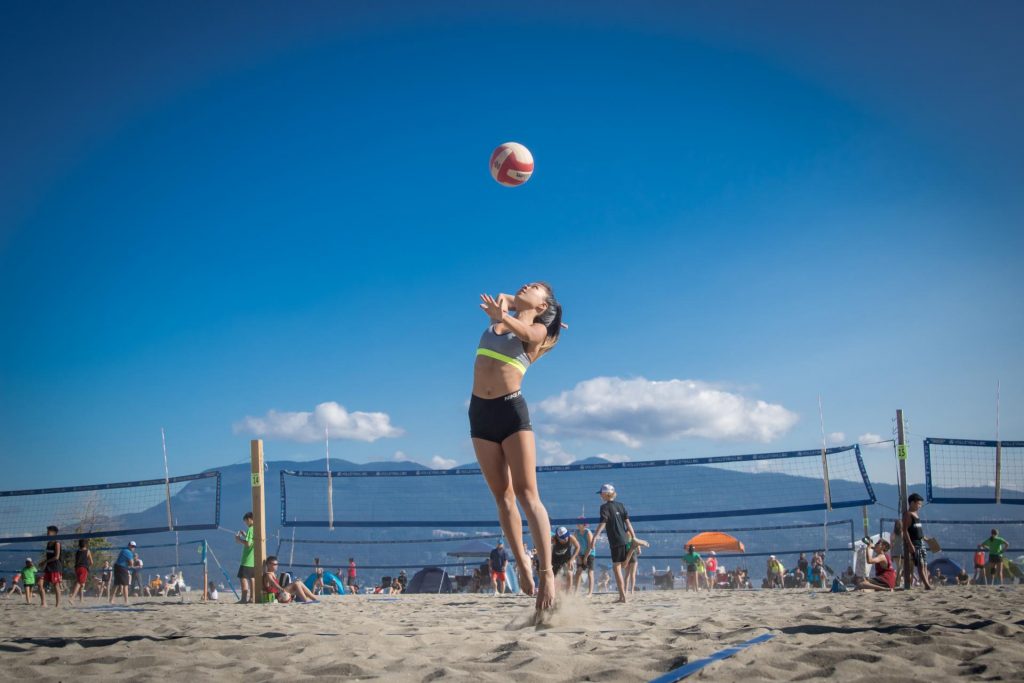
How can Lift Clinic help you optimize you ankle performance and achieve your goals?
It starts with an assessment – we recommend booking with one of our physiotherapists or chiropractors to start this process. Depending on the results of your assessment, we’ll be able to recommend a path that may also include other disciplines such as strength coaches, massage therapy, podiatrists etc.
References
Hunt, K. J., Hurwit, D., Robell, K., Gatewood, C., Botser, I. B., & Matheson, G. (2017b). Incidence and epidemiology of foot and ankle injuries in elite collegiate athletes. The American Journal of Sports Medicine, 45(2), 426–433. https://doi.org/10.1177/0363546516666815
LaPlaca, D. A., & Seedman, J. (2020). The importance of the foot and ankle in athletic performance. Strength & Conditioning Journal, Publish Ahead of Print. https://doi.org/10.1519/SSC.0000000000000598
